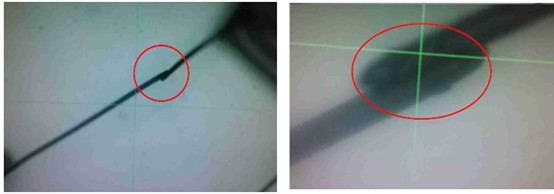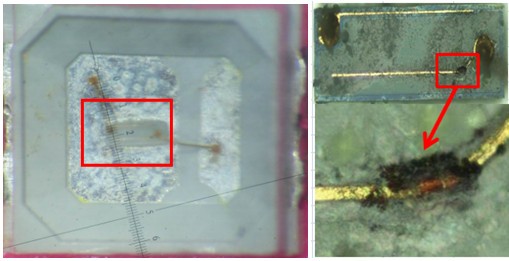How to analyze the failure of lighting LEDs?
Do you still remember the success of Op in the double eleven? 200 million yuan, we have seen LEDs have gradually become popular. However, although it has become popular, we still have a lot of LED failures during production and use. Here we talk about the LED failure mode.
As general-purpose lighting LEDs, there are currently two main types: one is SMD LEDs that can perform SMT operations; the other is integrated and arrayed COB and copper substrate modules. Of course, there is also a DOB, but today we will not discuss it for the time being.
First, the failure mode of SMD LED
First let's take a look at the failure mode of SMD LEDs. There are too many SMD LEDs, 2835, 3528, 5050, 5630, 3014, 4014 and so on. The plastic seal of the bracket has been from PPA, PCT, to EMC, and so on. Regardless of the package size, the failure modes are not much different. I have summarized a few points.
1.1 The most serious failure is the dead light.
Dead lights should be divided into true death or suspended animation.
The more common situation of suspended animation is the virtual connection between the LED and the PCB when the LED is over reflowing. This virtual welding is better to find and solve. The location of the virtual weld can be found by spotting and aging, and the LED can be corrected and replaced by a heating station or a heat gun. Another kind of suspended animation is the virtual connection inside the LED or the broken gold wire but still squatting together. As shown in Figure 1 below, it is the virtual connection inside the typical LED gold wire (already disconnected, but still squatting together, the LED can still be lit, but after a while, the broken wire will be separated due to the stress of the colloid) .

â–² Figure 1 gold line disconnection failure mode
If you are really dead, the situation is much more, but the common thing is the gold wire break (that is, in Figure 1 if the wire breaks are not squatting, it is a kind of real death). Another is that the overcurrent causes the chip and the gold wire to burn out. This visual observation is very obvious, as shown in Figure 2 below. Summarizes several conditions that are really dead: one is the line fault problem, which may be caused by poor bonding, causing line failure, or internal stress (force of thermal expansion and contraction) leading to line failure; one is exceeding the necessary current and voltage. Another problem is the problem of electrostatic breakdown of LEDs (this failure mode is not obvious, the chip PN junction is broken down, it takes a while to die).

â–² Figure 2 over-current leads to failure mode of chip burnout
Then the question comes, how to avoid or reduce the serious failure of the dead lights.
The most important thing is to ensure the reliability of the welding of the line. The adverse consequences of these reliability are fatal. First of all, you must ensure the stability of the machine, as well as the wire bonding mode, some need to press the tail line, or add a tail to the tail line. Secondly, it is to ensure the compatibility of the wire and the chip key. In the past, we used 9999 pure gold, and now we use K gold (more than 60% gold), or alloy (more than 8% gold) and CHIP PAD key compatibility and welding strength need to be considered.
In addition, it is related to the hardness of the glue. If the glue is too hard, the stress (the force of thermal expansion and contraction) will break the chip. This failure mode is also more common. Why? Because silica gel is too expensive, the sealing is not good, and more people tend to use hard silicone and epoxy resin as potting glue. Therefore, when we choose packaging materials, we must consider the matching of stress and packaging, not too hard, suitable for the environment.
For example, the current 9V1W 2835 is used as the light source of the bulb lamp, and the pin temperature TS is often between 105-110 °C. So for such a high temperature, the hardness of our package glue must be small, otherwise the lamp will be dead due to excessive stress. Of course, if it is a 0.06W LED, the epoxy resin should be a cheap and practical package glue, and the stress is not too great. As for electrostatic protection, almost all electronic devices in the electronics industry need to be electrostatically protected, such as setting up air showers, conducting body charging, air humidification, equipment grounding, and adding plasma fans. The measures for the universality of electrostatic protection are described here.
Marine Diesel Generator,Marine Generator Set,Diesel Marine Generator,Boat Genset
Jiangsu Vantek Power Machinery Co., Ltd , https://www.vantekpower.com